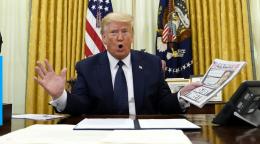Barr Promises to Sic Terror-Hunters on Protesters
ANTIFA HOOLIGAN
The nationwide network of Joint Terrorism Task Forces aren’t built to go after property crimes committed by protesters. But, veterans say, the rule of law isn’t the point here.
Jun. 01, 2020
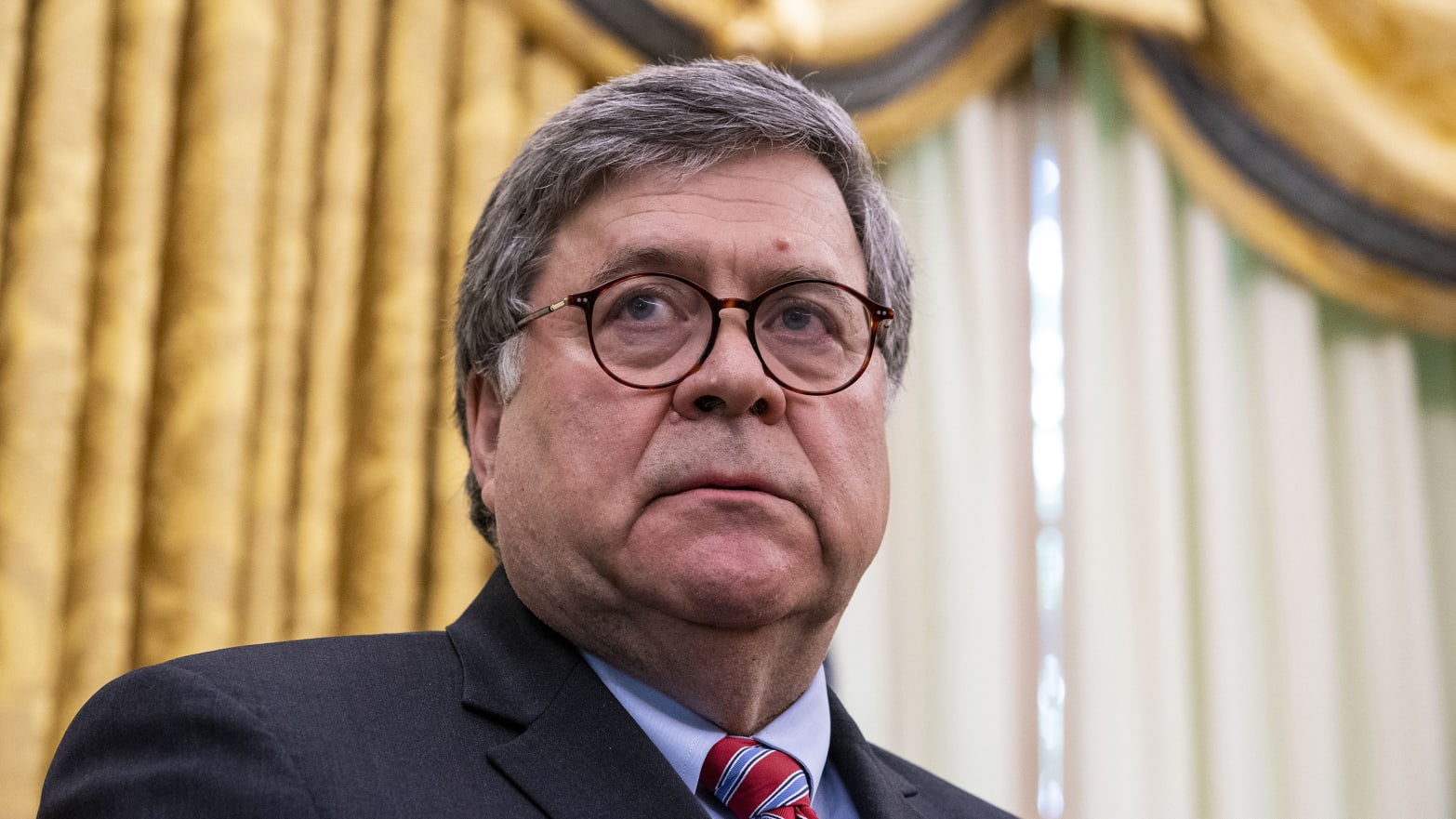
Doug Mills-Pool/Getty
YOU KNOW WHO ALSO CALLED ANTI-FASCISTS HOOLIGANS?
Attorney General Bill Barr told state governors on Monday that the Department of Justice was prepared to use the FBI’s regional counterterrorism hubs to share information with local law enforcement about “extremists” and “agitators” in the protests sweeping the country.
Barr said the Justice Department would tap Joint Terrorism Task Forces (JTTFs)—regional groups that ordinarily unite area FBI agents with state, local and federal law enforcement to monitor and pursue suspected terrorists—to “identify people in the crowd, pull them out and prosecute them.”
It’s an early glimpse of how the Justice Department plans to make President Trump’s legally dubious threat to treat protesters as terrorists a reality. According to a JTTF veteran, it’s a flagrant misuse of the task forces. And it’s a sign that the ever-expanding war on terror is jumping yet another guardrail.
Hours later, Barr left the White House premises and walked on to the square of Lafayette Park just to the north. He stayed roughly one block away from the gathering crowd of protesters who were stationed behind a barricade of fences and layers of armed policemen. Barr, in a suit but no tie, stood among what appeared to be advisers. He seemed to be studying the crowd ahead of him, occasionally pointing at them while talking to those beside him. He never ventured too close. And soon thereafter the police began pushing the protesters far back from the fencing.
Then they began tear gassing the protesters. Then the horses came in.
Earlier in the day, Barr told the governors, “It seems that some of the common dimensions are … we have the normal protesters. You have opportunistic people like looters. But in many places … you have this ingredient of extremists, anarchists...agitators who are driving the violence,” adding that the JTTF construction was a “a tried and true system.”
“It worked for domestic homegrown terrorists,” he said. “It already integrates your state and local people. It’s intelligence driven. We want to lean forward and charge … anyone who violates a federal law in connection with this rioting.”
Gov. Janet Millis, a Democrat from Maine, pressed Barr on who exactly was inciting violence in the protests.
“I’d be very interested in knowing the intel so we can prepare in advance for any insurgents or any professional instigators,” she said. “I would love to get the intel that you appear to have access to in regard to who these individuals are.”
‘Unhinged’ Trump Demands Mass Arrests, Flag-Burning Laws
Barr said all of the relevant intelligence would be shared through the JTTF. Before the call moved on, President Trump stepped in and suggested that governors, too, share intelligence they have gathered on violent protestors with the Department of Justice.
For the second day in a row, the FBI declined to comment. Late on Monday, it announced it was creating a tip line for people to inform on “violent instigators who are exploiting legitimate, peaceful protests and engaging in violations of federal law.” It assured in a press release, “The FBI respects the rights of individuals to peacefully exercise their First Amendment rights.” It did not specify any federal laws citizens might notice protesters violating.
JTTFs targets are designated terrorist groups – typically foreign terrorist organizations, as certified by the State and Treasury departments. There is no domestic terrorism statute, but the JTTFs can also target violent domestic groups like white-supremacist militias, but those organizations typically have a record of extreme violence, to include murder.
RELATED IN POLITICS
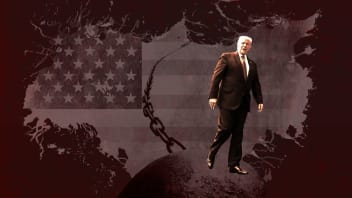
Trump’s America Could Be on His List of Human Rights Abusers
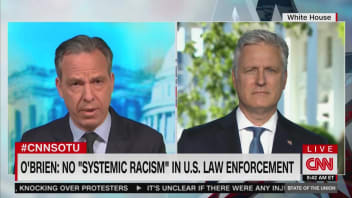
O’Brien: Trump Shooting Tweet Was to ‘De-Escalate Violence’
“There’s a criteria you have to fit. Breaking windows and burning cars doesn’t fit,” said Ali Soufan, a retired FBI counterterrorism agent and JTTF veteran. “This is a divisive political message in an election year, trying to create an enemy.”
Soufan said he did not know how the Justice Department would be able to reconcile the president’s tweeted desire to designate Antifa as a terrorist group with the missions of the JTTF.
John Cohen, a former senior Department of Homeland Security official, said this “interesting” use of the JTTFs “was OK as long as they are targeting actual domestic violent extremist from both the far right and far left engaged in violent activity and not simply those engaged in protected speech.”
But Soufan noted that Trump was not remotely interested in applying the JTTF’s focus equally.
“If there’s no murder, no threat to the national security of the U.S., no divisiveness in the way Atomwaffen or the Base is doing, how do you want to do this? You’re working a couple guys getting together on social media to do this? You’re having a violation for graffiti?” Soufan said. “What is [FBI Director] Christopher Wray going to do? Are there going to be structural changes in the FBI to do this kind of work?”
Antifa is not an organization, but instead an ethic of antifascist confrontation. That’s permitted right-wingers to define Antifa broadly as hated, violent political opponents – and, now, to open the aperture of permissible state violence against Americans. “Now that we clearly see Antifa as terrorists, can we hunt them down like we do those in the Middle East?” tweeted Rep. Matt Gaetz (R-Fl.) “[L]et's see how tough these Antifa terrorists are when they're facing off with the 101st Airborne Division,” added Sen. Tom Cotton (R-Ark.), an Iraq war veteran.
A Justice Department spokesperson did not respond to a question about how, for legal purposes, the department is defining Antifa.
Within that amorphousness is an authoritarian opportunity, according to Jason Stanley, a Yale philosophy professor and author of How Fascism Works.
“It’s an open-ended, undefined target, and we know from the war on terror that many people were caught up by being family members, by being connected” to terrorist targets by a spiraling web of association, Stanley said. “First they came for the Muslims and I said nothing because I was not Muslim – the Neimoller poem all over again. It never stops at just the hated minority group, it always goes to opponents. History tells you that. To use the apparatus already misused once, against domestic political opponents, it’s incredibly dangerous.”
“If there’s no murder, no threat to the national security of the U.S., how do you want to do this? You’re working a couple guys getting together on social media to do this? You’re having a violation for graffiti?”
— Ali Soufan
Stanley also noted that aiming the counterterrorism apparatus at people protesting police unites the cops with Trump. “He wants to get law enforcement responding [to the protests] in a militarized way,” Stanley said. “If you’re an authoritarian, you want law enforcement on your side.”
And not only them. On the call, Secretary of Defense Mark Esper encouraged governors to increase their use of the National Guard to “dominate the battlespace.” His casual reference to American cities with a term used to describe theaters for military operations shocked the former commander of the Joint Special Operations Command, retired Gen. Tony Thomas. “Not what America needs to hear… ever, unless we are invaded by an adversary or experience a constitutional failure...ie a Civil War,” Thomas tweeted. Trump also told the governors that the chairman of the Joint Chiefs of Staff, Gen. Mark Milley – who, by statute, is not in the chain of command – was “in charge” of the response to the protests. A spokesperson for Milley did not immediately return a call seeking clarification.
When asked about the president’s comments Monday evening, one senior Department of Defense official told The Daily Beast: “I have no idea what is going on.”
As DC police tear-gassed peaceful protesters outside the White House late Monday afternoon, the president promised to stop “acts of domestic terror.” It was unclear if Trump had invoked the 19th century Insurrection Act, which empowers the president, in cases of “unlawful obstructions, combinations, or assemblages, or rebellion against the authority of the United States” to use the military “to suppress the rebellion.” But he said if the governors “refuse to take action” for that suppression “then I will deploy the United States military and quickly solve the problem for them.”
Trump introduced Barr on the call with governors Monday by saying he would “activate” his attorney general. “And we will activate him strongly,” he said. “We are strongly for arrests. We do have to get much tougher. You have to arrest people and you have to try people. And they need to go to jail for long periods of time.” Trump called individuals involved in the protests who were stealing goods from stores and lighting cars on fire as “terrorists”, adding that “they are Antifa and they are the radical left.”
Barr hinted at the beginning of the call that the Department of Justice would begin to move forward with working with states to arrest and prosecute individuals who were involved in spreading violence during the protests.
“Two of the most common are anyone who crosses state lines …. to incite, participate in or encourage riots or anyone who is using any interstate facilities including telecommunications or whatever…in connection with participating in or encouraging riots,” Barr said. “But there are many others … conspiracies or any other things like that."
Barr appears to be referencing Title 18, section 2101 of the U.S. Code, which references “riots.”
But there do appear to be exceptions, including “for the purpose of pursuing the legitimate objectives of organized labor, through orderly and lawful means,” the law notes.
It’s unclear how the Department of Justice or the JTTF would go about identifying individuals who crossed state lines and then proceeded to incite violence. It’s also unclear whether there are such individuals participating in the current unrest.
Regardless, Barr said, states need to do a better job at controlling the protestors if only so the police can arrest and prosecute.
Trump Fears the Minnesota Chaos Makes Him Look Weak
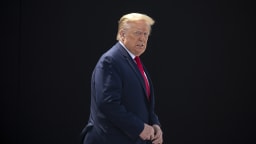
“We have to control the crowds. And that requires a strong presence. In many places … it will require the national guard. The key is you have to have adequate force… to be more dynamic and go after the agitators,” he said. “The police are pinned back ….they are just standing in line watching the events. And when they disperse the crowds people are running off in different directions.
The reason we have to control the streets is not just to bring peace to that town but it is to catch the bad actors.”
However much Barr seeks to turn the JTTFs against “Antifa,” Soufan considered it a cynical distraction from the nationwide discontent on display over the past week.
“We forget about this grassroots movement fed up with the injustice and the racism in this society,” he said.
But by Monday night, U.S. Attorneys were beginning to respond to Barr’s call to deploy the JTTFs. “The criminals who have caused havoc in neighborhoods across Southern California appear to be exploiting a situation in which other citizens are exercising their First Amendment rights to assemble and express their viewpoints,” Nicola Hanna, the U.S. Attorney for the Central District of California, said in a statement. “We are confronting this outlaw behavior by providing federal resources and working closely with local police to identify cases in which federal charges could be appropriately filed.”

Erin Banco
National Security Reporter
Barr said the Justice Department would tap Joint Terrorism Task Forces (JTTFs)—regional groups that ordinarily unite area FBI agents with state, local and federal law enforcement to monitor and pursue suspected terrorists—to “identify people in the crowd, pull them out and prosecute them.”
It’s an early glimpse of how the Justice Department plans to make President Trump’s legally dubious threat to treat protesters as terrorists a reality. According to a JTTF veteran, it’s a flagrant misuse of the task forces. And it’s a sign that the ever-expanding war on terror is jumping yet another guardrail.
Hours later, Barr left the White House premises and walked on to the square of Lafayette Park just to the north. He stayed roughly one block away from the gathering crowd of protesters who were stationed behind a barricade of fences and layers of armed policemen. Barr, in a suit but no tie, stood among what appeared to be advisers. He seemed to be studying the crowd ahead of him, occasionally pointing at them while talking to those beside him. He never ventured too close. And soon thereafter the police began pushing the protesters far back from the fencing.
Then they began tear gassing the protesters. Then the horses came in.
Earlier in the day, Barr told the governors, “It seems that some of the common dimensions are … we have the normal protesters. You have opportunistic people like looters. But in many places … you have this ingredient of extremists, anarchists...agitators who are driving the violence,” adding that the JTTF construction was a “a tried and true system.”
“It worked for domestic homegrown terrorists,” he said. “It already integrates your state and local people. It’s intelligence driven. We want to lean forward and charge … anyone who violates a federal law in connection with this rioting.”
Gov. Janet Millis, a Democrat from Maine, pressed Barr on who exactly was inciting violence in the protests.
“I’d be very interested in knowing the intel so we can prepare in advance for any insurgents or any professional instigators,” she said. “I would love to get the intel that you appear to have access to in regard to who these individuals are.”
‘Unhinged’ Trump Demands Mass Arrests, Flag-Burning Laws
Barr said all of the relevant intelligence would be shared through the JTTF. Before the call moved on, President Trump stepped in and suggested that governors, too, share intelligence they have gathered on violent protestors with the Department of Justice.
For the second day in a row, the FBI declined to comment. Late on Monday, it announced it was creating a tip line for people to inform on “violent instigators who are exploiting legitimate, peaceful protests and engaging in violations of federal law.” It assured in a press release, “The FBI respects the rights of individuals to peacefully exercise their First Amendment rights.” It did not specify any federal laws citizens might notice protesters violating.
JTTFs targets are designated terrorist groups – typically foreign terrorist organizations, as certified by the State and Treasury departments. There is no domestic terrorism statute, but the JTTFs can also target violent domestic groups like white-supremacist militias, but those organizations typically have a record of extreme violence, to include murder.
RELATED IN POLITICS

Trump’s America Could Be on His List of Human Rights Abusers

O’Brien: Trump Shooting Tweet Was to ‘De-Escalate Violence’
“There’s a criteria you have to fit. Breaking windows and burning cars doesn’t fit,” said Ali Soufan, a retired FBI counterterrorism agent and JTTF veteran. “This is a divisive political message in an election year, trying to create an enemy.”
Soufan said he did not know how the Justice Department would be able to reconcile the president’s tweeted desire to designate Antifa as a terrorist group with the missions of the JTTF.
John Cohen, a former senior Department of Homeland Security official, said this “interesting” use of the JTTFs “was OK as long as they are targeting actual domestic violent extremist from both the far right and far left engaged in violent activity and not simply those engaged in protected speech.”
But Soufan noted that Trump was not remotely interested in applying the JTTF’s focus equally.
“If there’s no murder, no threat to the national security of the U.S., no divisiveness in the way Atomwaffen or the Base is doing, how do you want to do this? You’re working a couple guys getting together on social media to do this? You’re having a violation for graffiti?” Soufan said. “What is [FBI Director] Christopher Wray going to do? Are there going to be structural changes in the FBI to do this kind of work?”
Antifa is not an organization, but instead an ethic of antifascist confrontation. That’s permitted right-wingers to define Antifa broadly as hated, violent political opponents – and, now, to open the aperture of permissible state violence against Americans. “Now that we clearly see Antifa as terrorists, can we hunt them down like we do those in the Middle East?” tweeted Rep. Matt Gaetz (R-Fl.) “[L]et's see how tough these Antifa terrorists are when they're facing off with the 101st Airborne Division,” added Sen. Tom Cotton (R-Ark.), an Iraq war veteran.
A Justice Department spokesperson did not respond to a question about how, for legal purposes, the department is defining Antifa.
Within that amorphousness is an authoritarian opportunity, according to Jason Stanley, a Yale philosophy professor and author of How Fascism Works.
“It’s an open-ended, undefined target, and we know from the war on terror that many people were caught up by being family members, by being connected” to terrorist targets by a spiraling web of association, Stanley said. “First they came for the Muslims and I said nothing because I was not Muslim – the Neimoller poem all over again. It never stops at just the hated minority group, it always goes to opponents. History tells you that. To use the apparatus already misused once, against domestic political opponents, it’s incredibly dangerous.”
“If there’s no murder, no threat to the national security of the U.S., how do you want to do this? You’re working a couple guys getting together on social media to do this? You’re having a violation for graffiti?”
— Ali Soufan
Stanley also noted that aiming the counterterrorism apparatus at people protesting police unites the cops with Trump. “He wants to get law enforcement responding [to the protests] in a militarized way,” Stanley said. “If you’re an authoritarian, you want law enforcement on your side.”
And not only them. On the call, Secretary of Defense Mark Esper encouraged governors to increase their use of the National Guard to “dominate the battlespace.” His casual reference to American cities with a term used to describe theaters for military operations shocked the former commander of the Joint Special Operations Command, retired Gen. Tony Thomas. “Not what America needs to hear… ever, unless we are invaded by an adversary or experience a constitutional failure...ie a Civil War,” Thomas tweeted. Trump also told the governors that the chairman of the Joint Chiefs of Staff, Gen. Mark Milley – who, by statute, is not in the chain of command – was “in charge” of the response to the protests. A spokesperson for Milley did not immediately return a call seeking clarification.
When asked about the president’s comments Monday evening, one senior Department of Defense official told The Daily Beast: “I have no idea what is going on.”
As DC police tear-gassed peaceful protesters outside the White House late Monday afternoon, the president promised to stop “acts of domestic terror.” It was unclear if Trump had invoked the 19th century Insurrection Act, which empowers the president, in cases of “unlawful obstructions, combinations, or assemblages, or rebellion against the authority of the United States” to use the military “to suppress the rebellion.” But he said if the governors “refuse to take action” for that suppression “then I will deploy the United States military and quickly solve the problem for them.”
Trump introduced Barr on the call with governors Monday by saying he would “activate” his attorney general. “And we will activate him strongly,” he said. “We are strongly for arrests. We do have to get much tougher. You have to arrest people and you have to try people. And they need to go to jail for long periods of time.” Trump called individuals involved in the protests who were stealing goods from stores and lighting cars on fire as “terrorists”, adding that “they are Antifa and they are the radical left.”
Barr hinted at the beginning of the call that the Department of Justice would begin to move forward with working with states to arrest and prosecute individuals who were involved in spreading violence during the protests.
“Two of the most common are anyone who crosses state lines …. to incite, participate in or encourage riots or anyone who is using any interstate facilities including telecommunications or whatever…in connection with participating in or encouraging riots,” Barr said. “But there are many others … conspiracies or any other things like that."
Barr appears to be referencing Title 18, section 2101 of the U.S. Code, which references “riots.”
But there do appear to be exceptions, including “for the purpose of pursuing the legitimate objectives of organized labor, through orderly and lawful means,” the law notes.
It’s unclear how the Department of Justice or the JTTF would go about identifying individuals who crossed state lines and then proceeded to incite violence. It’s also unclear whether there are such individuals participating in the current unrest.
Regardless, Barr said, states need to do a better job at controlling the protestors if only so the police can arrest and prosecute.
Trump Fears the Minnesota Chaos Makes Him Look Weak

“We have to control the crowds. And that requires a strong presence. In many places … it will require the national guard. The key is you have to have adequate force… to be more dynamic and go after the agitators,” he said. “The police are pinned back ….they are just standing in line watching the events. And when they disperse the crowds people are running off in different directions.
The reason we have to control the streets is not just to bring peace to that town but it is to catch the bad actors.”
However much Barr seeks to turn the JTTFs against “Antifa,” Soufan considered it a cynical distraction from the nationwide discontent on display over the past week.
“We forget about this grassroots movement fed up with the injustice and the racism in this society,” he said.
But by Monday night, U.S. Attorneys were beginning to respond to Barr’s call to deploy the JTTFs. “The criminals who have caused havoc in neighborhoods across Southern California appear to be exploiting a situation in which other citizens are exercising their First Amendment rights to assemble and express their viewpoints,” Nicola Hanna, the U.S. Attorney for the Central District of California, said in a statement. “We are confronting this outlaw behavior by providing federal resources and working closely with local police to identify cases in which federal charges could be appropriately filed.”

Erin Banco
National Security Reporter




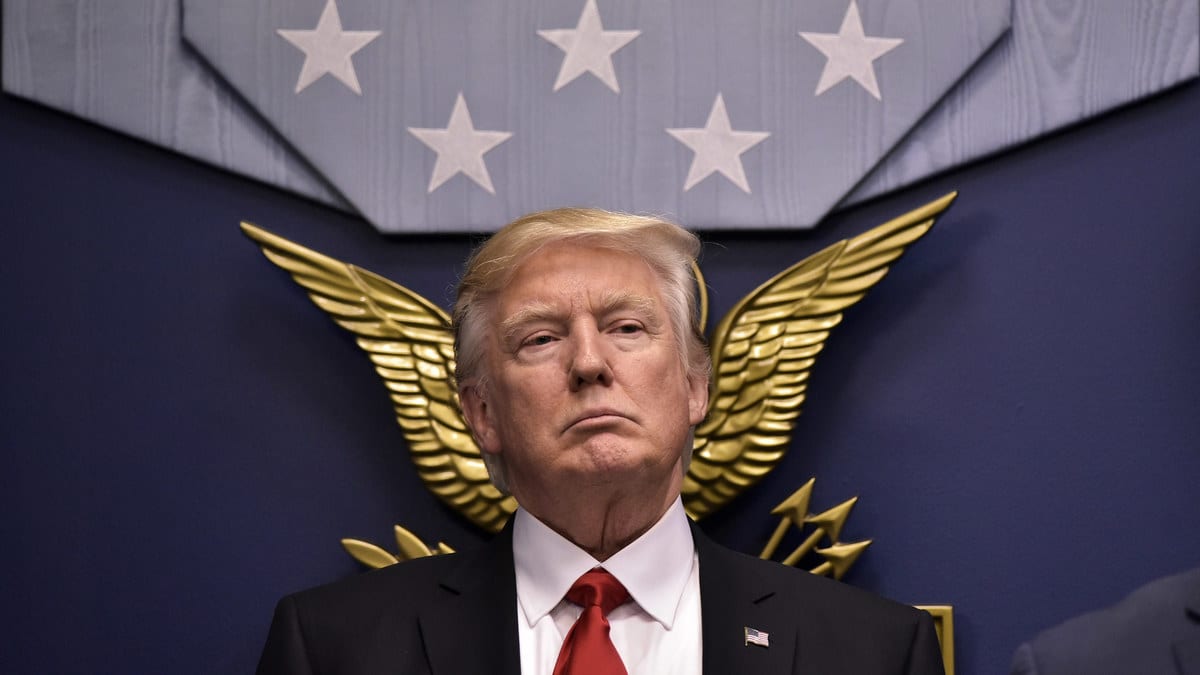
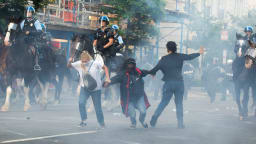

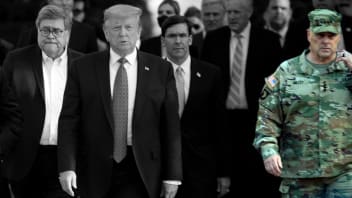

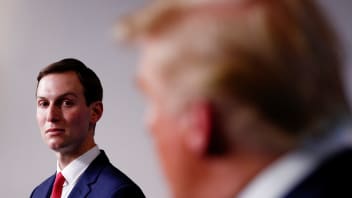


 “Over my shoulder is a picture of Paul Frishkorn. He was a longtime flight attendant and he was the first one to be taken from us with coronavirus,” Nelson said through tear-filled eyes. (Zoom screenshot)
“Over my shoulder is a picture of Paul Frishkorn. He was a longtime flight attendant and he was the first one to be taken from us with coronavirus,” Nelson said through tear-filled eyes. (Zoom screenshot) A flight attendant on an empty flight staying safe with a mask. (Molly Choma)
A flight attendant on an empty flight staying safe with a mask. (Molly Choma)




